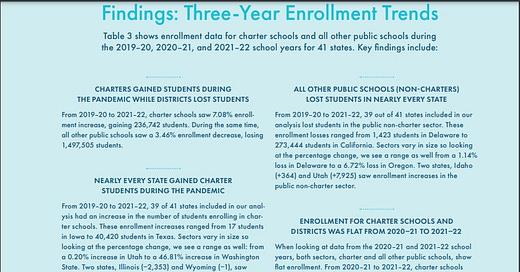Report: Minorities driving surges in charter school enrollment
Black student NC charter school enrollment almost double that of White students between 2019-2022; Hispanic enrollment rates rose over 23%.
A new report by the National Alliance for Public Charter Schools (NAPCS) looking at charter school enrollment trends for the years during and after the pandemic (2019-2022) shows the shift to such sc…
Keep reading with a 7-day free trial
Subscribe to More to the Story by A.P. Dillon to keep reading this post and get 7 days of free access to the full post archives.



